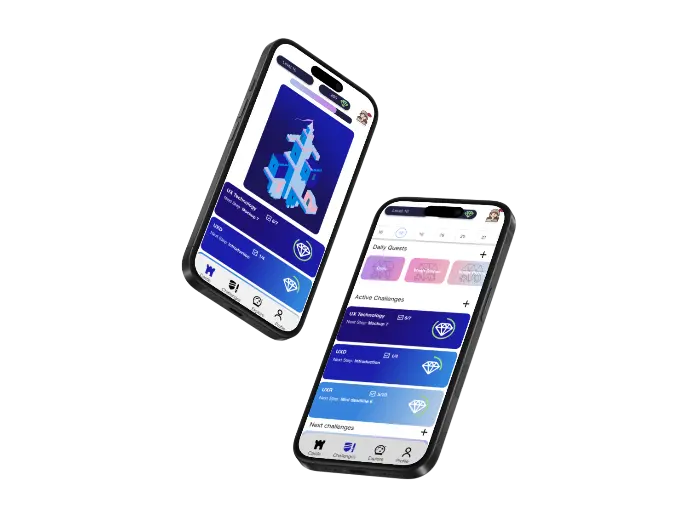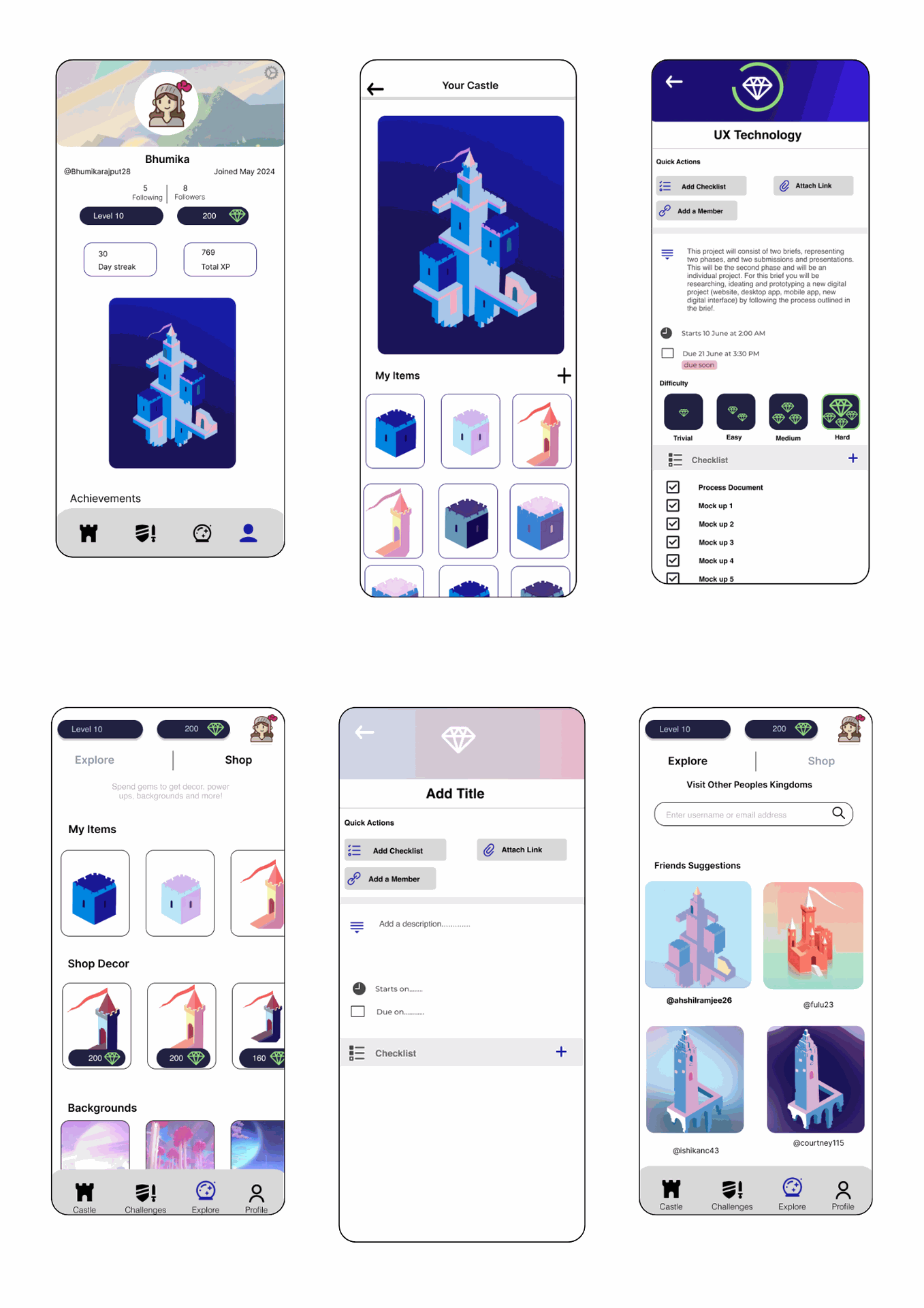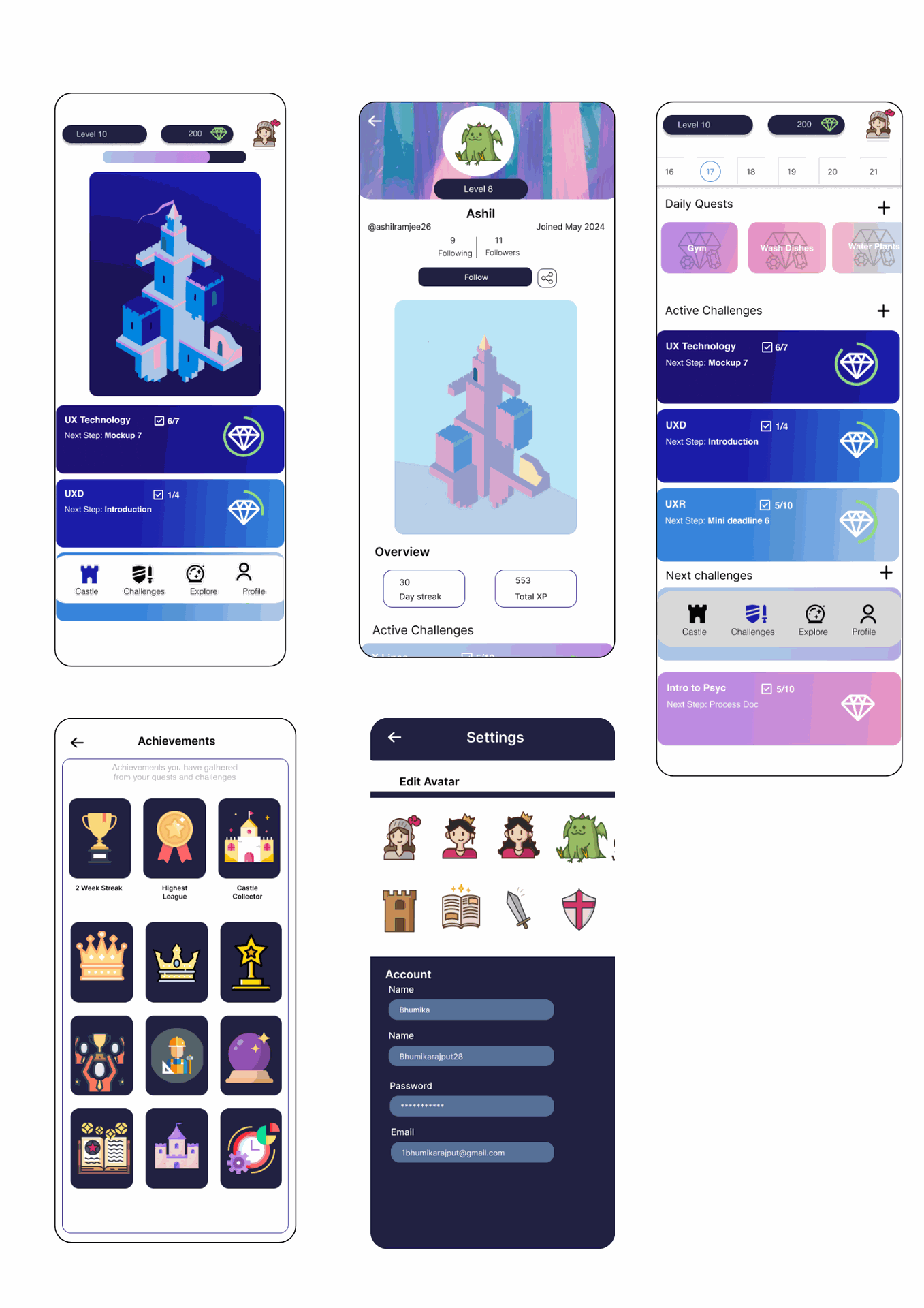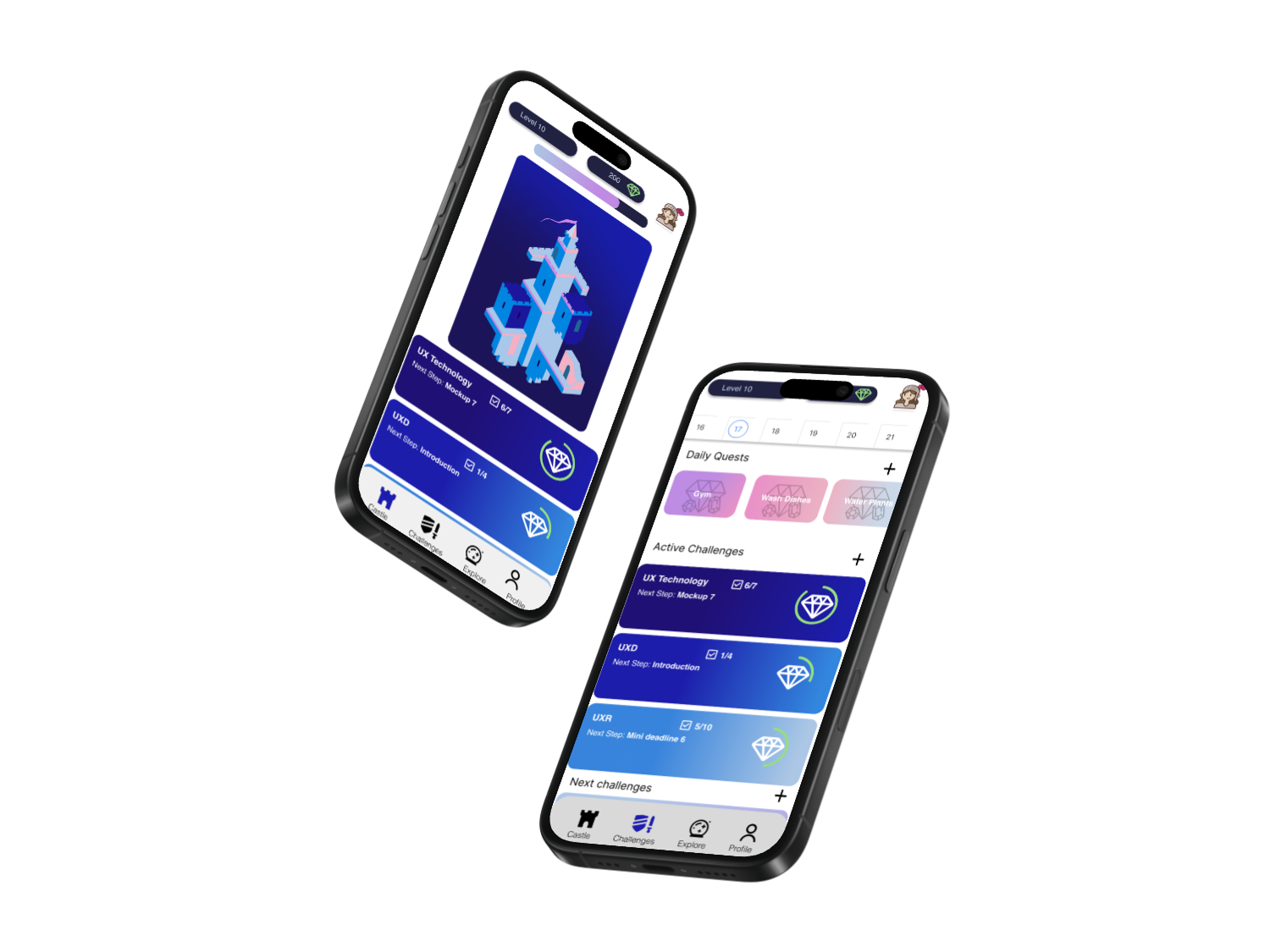Part 1
Inspiration
I was inspired by apps such as Duolingo and the Forest app, which use engaging animations and reward systems to give users a sense of achievement and help them become more productive or achieve their goals. Both of these apps are successful at capturing users' attention and have shown significant results. Additionally, I have personal experience using these apps and found them effective.
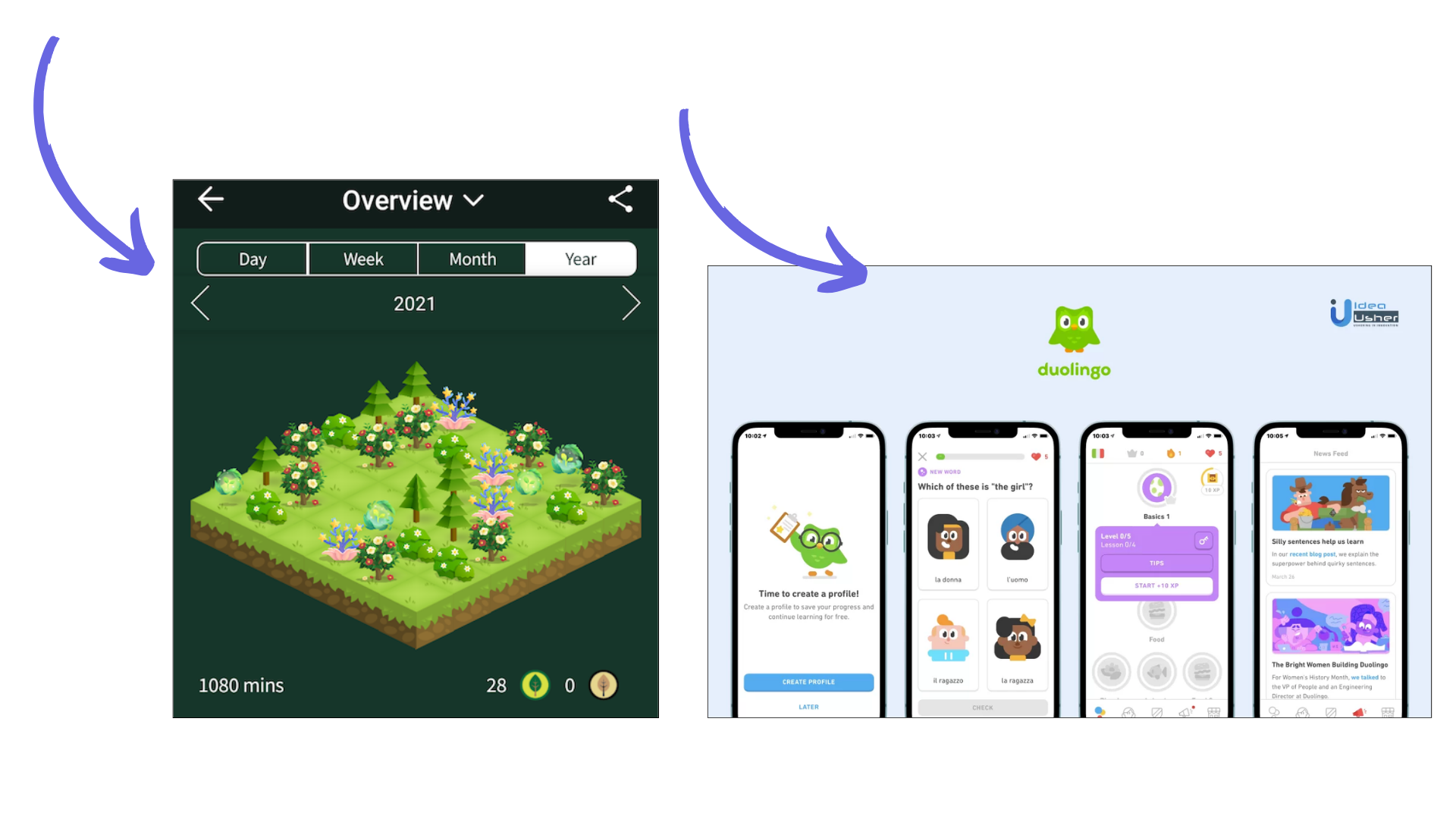
When considering my approach, I wanted to incorporate fantasy elements to help users feel engaged. I decided on a productivity app that allows users to build a kingdom by completing tasks, enabling them to look back on their progress while also feeling motivated to use the app and achieve more goals.

User Reserch
When researching this topic, I was also completing a brief for another module (COMM) where I analyzed how the language learning application Babbel was performing poorly in the market compared to its competitor Duolingo. My research showed that users preferred Duolingo due to its interactive features and fun lessons, despite Babbel offering more comprehensive language courses. This inspired me to apply similar engaging and interactive elements to my productivity application.
Additionally, I spoke to users about what they would want from a productivity app and how they might use a gamified version. I found that users wanted to have a sense of achievement, earn rewards, see their progress, experience instant gratification, have a fun way to complete boring tasks
Part 2
Paper Prototyping
In the paper prototyping phase, I explored various ideas and layouts for the productivity app. Consulting with classmates, my lecturer, and friends provided valuable insights into the navigation of the application and the essential features it should include. In my initial designs, I was still mapping out my ideas and trying to get a sense of what the application might look like. I presented it and gained insights by examining the layouts of other productivity apps.
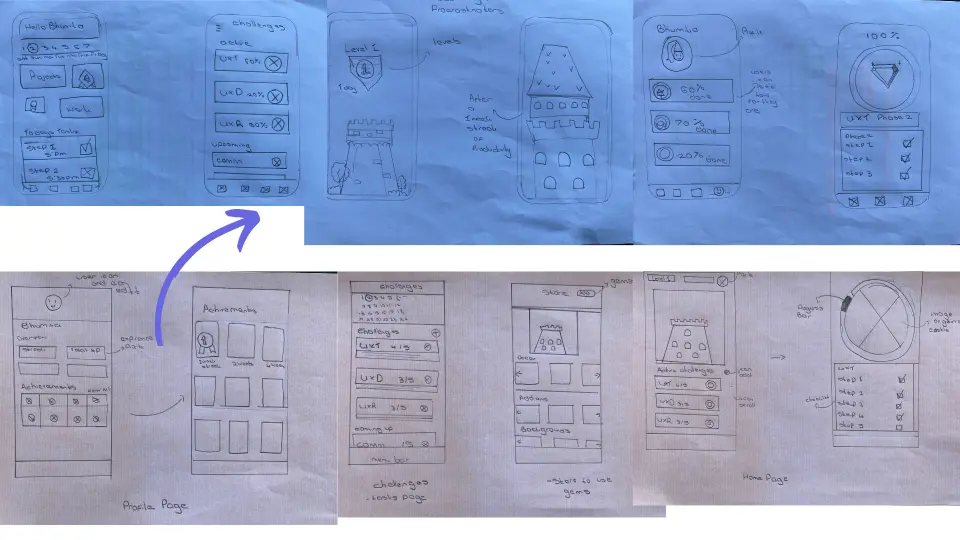
Feedback
This led me to create new paper prototypes to improve the layout. I incorporated elements from productivity apps mentioned in the previous brief, as well as features inspired by apps like Duolingo. These are the paper prototypes I presented during our focus group session. I shared my ideas and the features I planned to incorporate, along with inspirational photos to provide a visual element to my work.
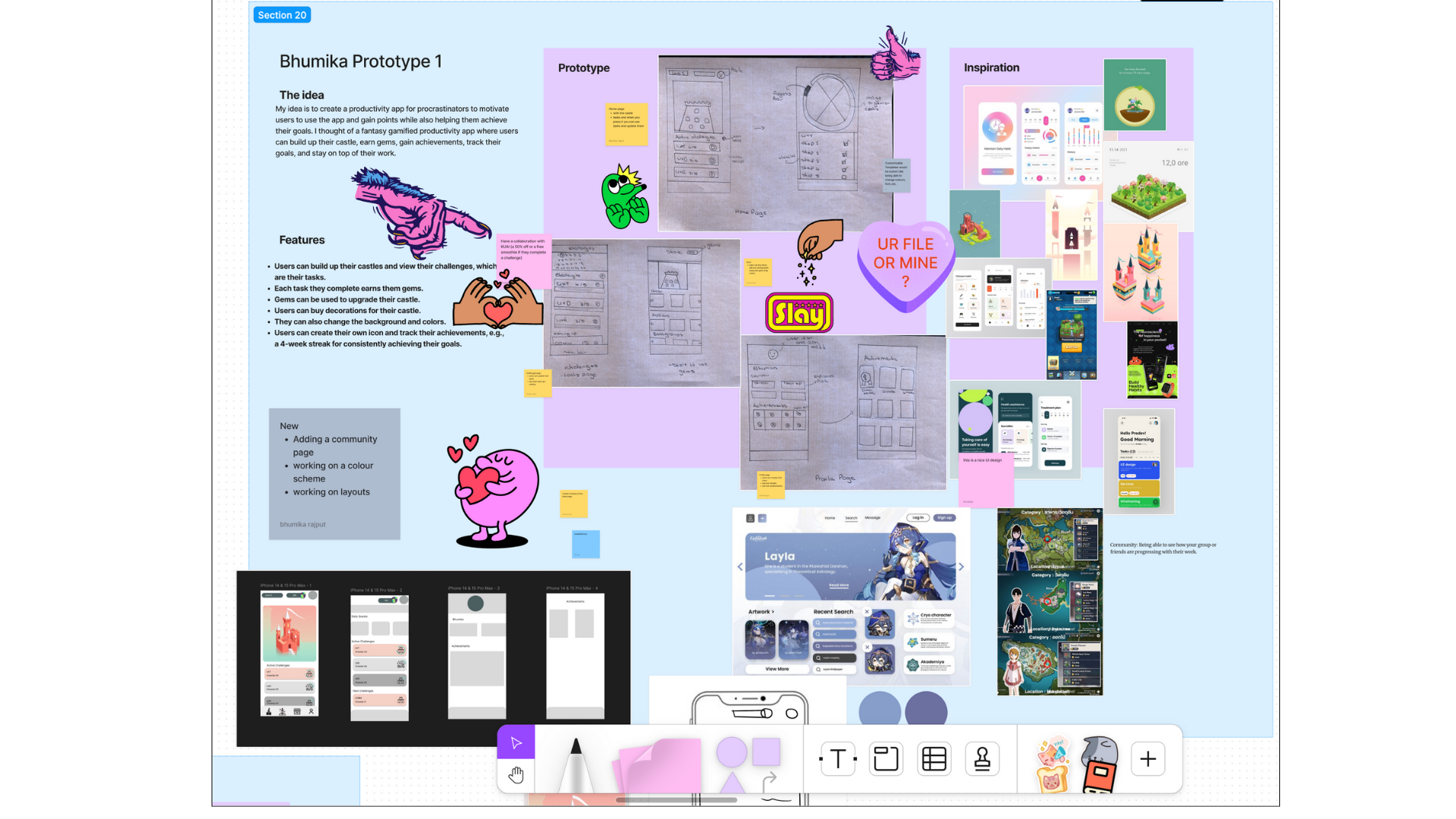
During this session, I received a lot of positive and notable feedback that helped me refine my ideas and determine a better way to present them, as well as identify new features to incorporate.
- One of the first things we discussed was the ideal UI design for the app. We considered that it might appear overly complex, so we agreed that a minimalist layout would be more suitable.
- Another idea suggested was to create a community page where users can connect and share their productivity achievements. -This would motivate users to complete tasks and contribute to building a larger community, as others can see their progress.
-Additionally, I received feedback on aligning elements in my app and keeping things minimalistic to prevent the application from being overwhelming, which I carefully considered
Sketches
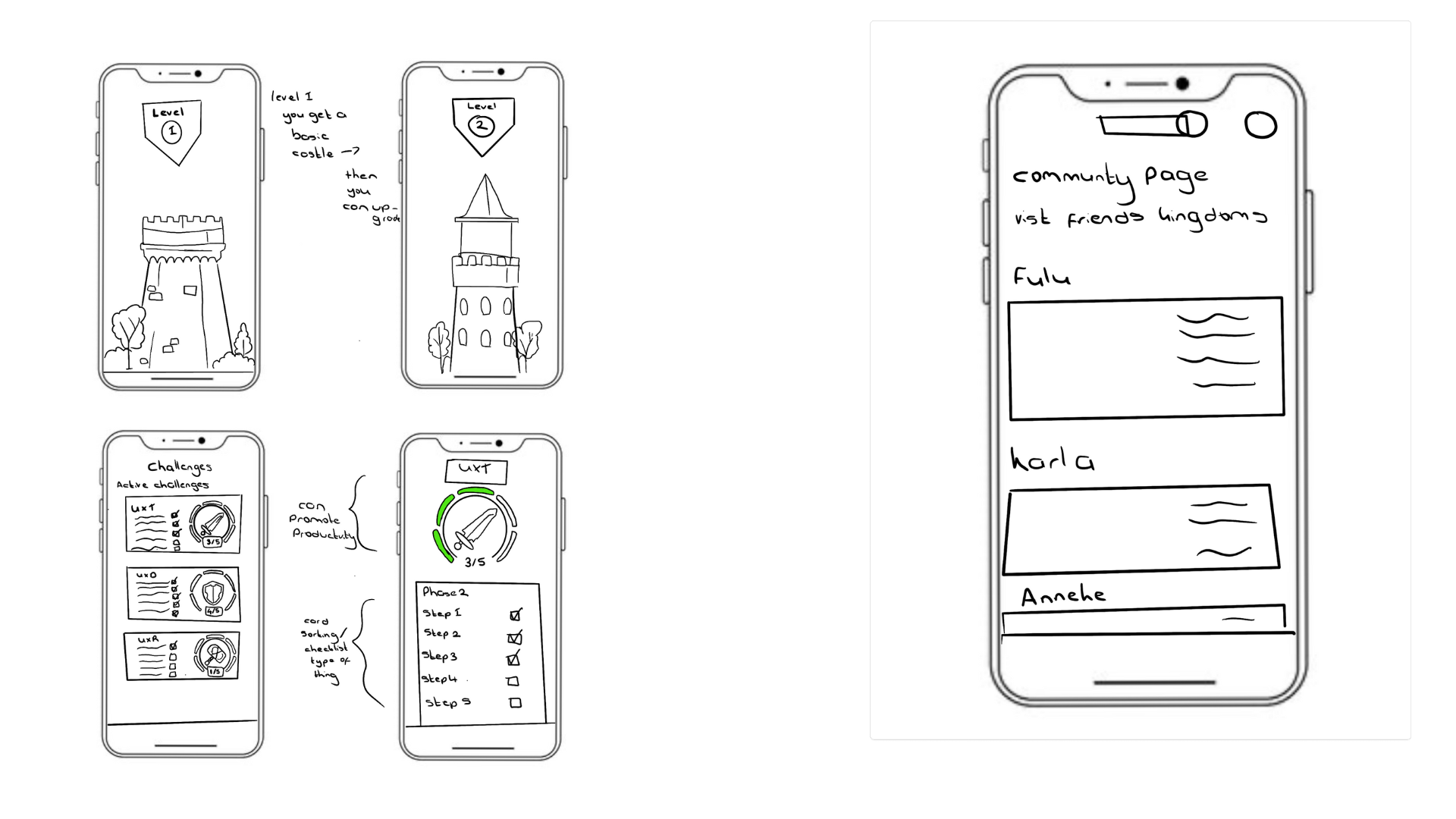
Part 3
My final digital prototypes evolved through various ideas and layouts, gradually taking shape as I received advice and feedback from classmates and began considering the app from a user's perspective. This process led to changes in the initial layout and color scheme.
For the final designs, I created my own illustrations that are used throughout the app. This cohesive approach helped bring together my vision for the app.
For the final designs in Figma, I created 11 interactive pages for the app that are user-friendly and facilitate easy navigation.
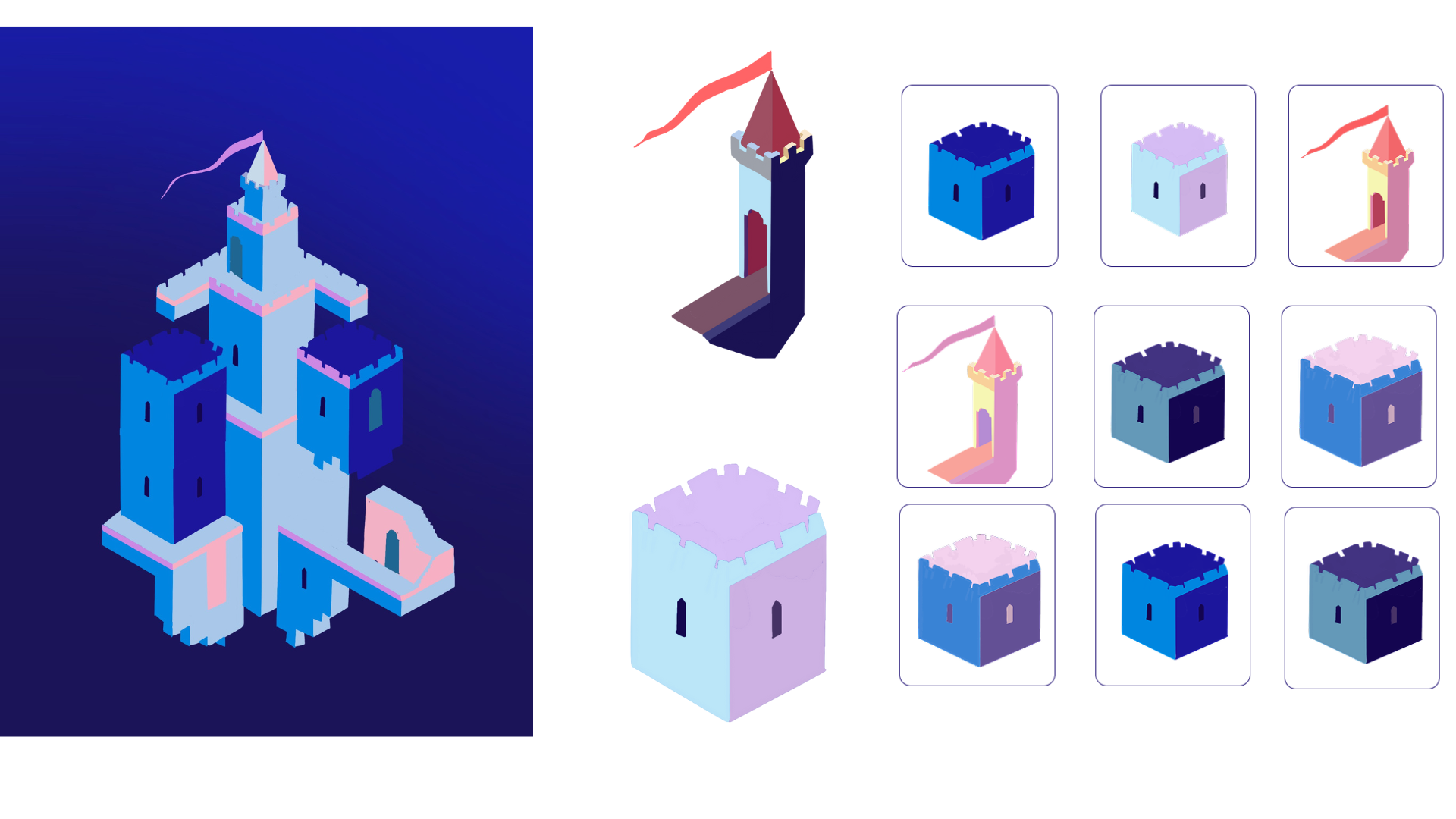
Wireframes
I began working on the application's layout by creating low-fidelity black-and-white wireframes. I then gradually added color and images, such as illustrations. This approach allowed me to focus on the key features of the application before refining the visual design.
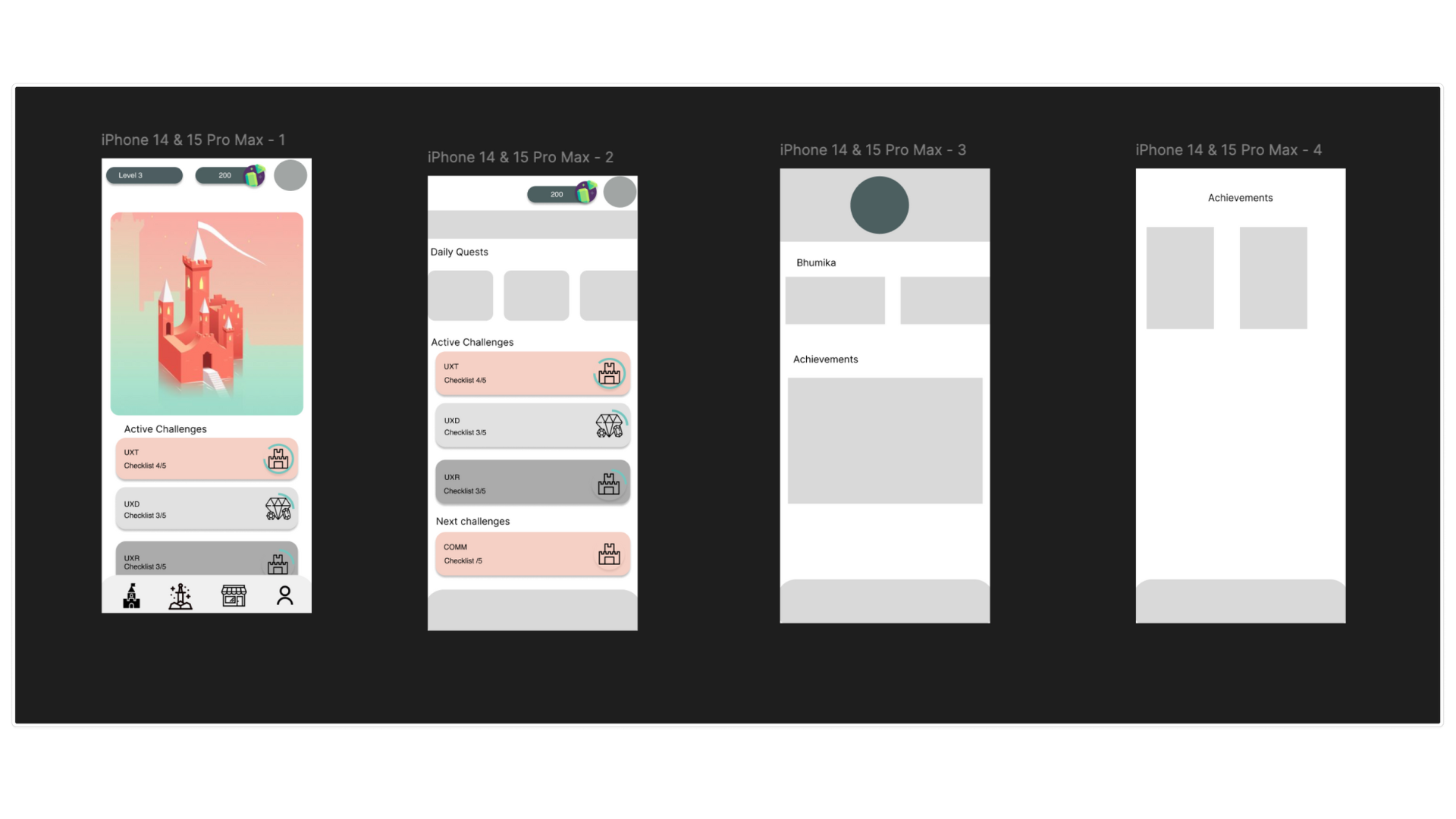
Prototype
The final prototype of the application allows users to build and expand their own kingdom while connecting with friends to foster accountability, motivation, and, most importantly, productivity. The illustrations I created serve as elements that users can purchase as accessories or building blocks for their kingdom, gradually creating a space that reflects their achievements. This feature enables users to visually track their progress, making their daily tasks feel rewarding and creative.
To view and test the final prototype, please click the link to the Figma file
